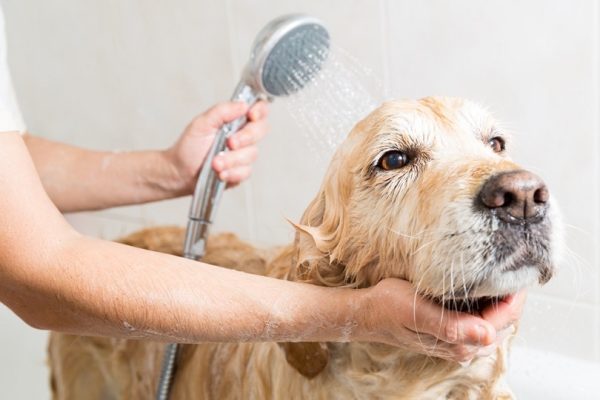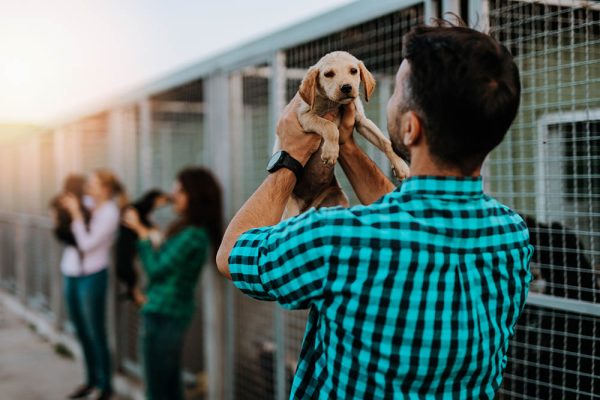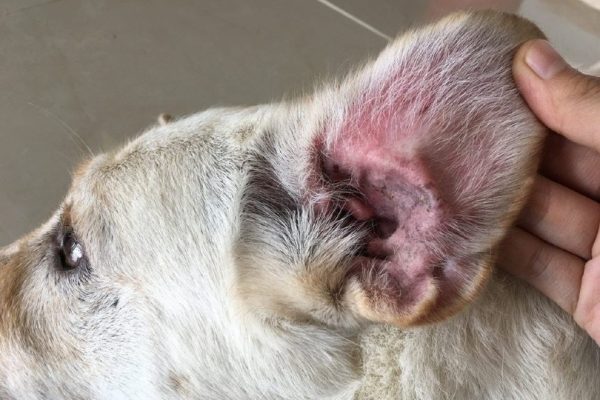In this article
View 8 More +The Czechoslovakian Wolfdog, or Czechoslovakian Vlciak, will certainly take your breath away at first glance. This wolf hybrid will make you do a double take as they look surprisingly just like their wild ancestors. Even though these dogs have been developed for quite some time, wild roots rule the hearts of this primal breed.
As you can probably understand, the Czechoslovakian Wolfdog is not a breed that will work for every family. In fact, only certain owners should take on the challenge, so make sure you know if they are right for your situation.
Breed Overview
Height:
12–18 inches
Weight:
60–90 pounds
Lifespan:
12–15 years
Colors:
Silver gray, yellow gray, gray
Suitable for:
Highly experienced owners
Temperament:
Instinctual, observant, loyal
The Czechoslovakian Wolfdog is a stunning specimen that looks remarkably like their wolf cousins. Mixing the impressive German Shepherd with the Carpathian wolf, these dogs certainly had a long road to get to where they are today in terms of temperament.
If you have thought about owning a wolf hybrid before, this particular dog might be just what you’re looking for. Keep in mind that owning a wolf hybrid is a huge responsibility and not every person, in fact most people, cannot keep them as pets. They also aren’t even legal to keep as pets in a lot of areas, so make sure you research the laws of owning one of these dogs first. Let’s learn more.
Czechoslovakian Wolfdog Characteristics

Czechoslovakian Wolfdog Puppies
Czechoslovakian Wolfdog puppies will differ greatly from other puppies that you’ve known in your life. Rather than being domesticated canines that are spoiled and pampered, these dogs come into the world a little differently.
Because they are a wolf-dog hybrid, they will act a bit different from other puppies their age. These dogs might be a little bit more nervous, skittish, and resistant to new things. It is important to socialize them early on to avoid overly suspicious behaviors and fear-based aggression.
It may also be difficult to find one of these puppies to begin with, since they aren’t legal to own in a lot of areas. If they are legal where you are, make sure to find a reputable breeder that is familiar with the breed and can provide health clearances.
Czechoslovakian Wolfdog Breed Origin & History
The Czechoslovakian Wolfdog was originally an experimental breed that was intended for highly advanced training for Czech government agencies in 1955. Originally, they were looking for intimidating and skilled dogs to patrol the border during the cold war.
These dogs were bred using German Shepherd and Carpathian wolf bloodlines. However, the temperament of these dogs didn’t fit the bill for what the government was wanting. The dogs continued to be bred though, and people continued to own them as pets.
They are not officially recognized by the AKC, but are part of the foundation stock service, which means they may be officially recognized by the AKC in the future with continued development of the breed.

Temperament & Intelligence of the Czechoslovakian Wolfdog
Czechoslovakian Wolfdogs are highly intelligent and keen on their surroundings. However, despite their intelligence, these dogs are generally not nearly as easy to train as their German Shepherd parents.
They tend to carry on a lot of the wolf traits, making them shy away from many methods of modern training. These dogs can learn moderate and simple commands but may differ in their responsiveness to overall training.
When it comes to overall personality, this can vary drastically from wolfdog to wolfdog. The thing about this particular breed is that you are taking a wild animal and mixing it with a long-domesticated dog breed, getting any personality and temperament combination in between.
Most of the time, the Czechoslovakian Wolfdog will have some level of skittishness. But they can take on the German Shepherd parent persona, being goofy, lovable, and just all-around more dog-like. The wolfdogs that are more like their wild parents might be more alert, responsive, and all around have more of a simply wild feel.
Are These Dogs Good for Families? 🏡
The Czechoslovakian Wolfdog is very well-suited to family living. Of course, you must have the right living circumstances to meet their needs. First of all, space is important. Most, if not all, apartment complexes and public living spaces do not allow such dogs as wolf-dog hybrids due to their unpredictability and liability. So, before you commit to buying such a breed, it is important to ask yourself if you will be permitted to keep the dog where you’re currently living.
In addition to most apartments not taking in a wolfdog, these types of living spaces are often too small to provide adequate room for a dog of such high intensity. These dogs work best in homes in rural areas where they can freely run, play, and explore.
Regarding temperament, these pack animals can steal your heart with their devotion. If they are raised alongside children, they generally do very well with them, accepting them as one of their own.
However, an unsocialized wolfdog can be nervous or skittish around children if it isn’t used to them. It might also never take to strangers. If you buy this breed, make sure you can commit throughout its lifetime, as it has very poor success rates with rehoming.

Does This Breed Get Along With Other Pets? 🐶 😽
Even though they do best in rural places, you should never have your wolfdog free and able to roam around unsupervised. These dogs have a very high prey drive and can kill other people’s pets, including chickens, cats, and other small pets.
Generally, the wolfdog gets along very well with other dogs, and some may be indifferent to them. Because they are pack animals, they likely will acclimate very well to dogs they grow up with, but they might be a little more resistant to accepting new canines in the future.
Often, the Czechoslovakian Wolfdog does not like change and might be resistant and even completely against having a new canine newcomer introduced to the household. If you plan on getting another dog in the future, it is important to have a plan in place in case things don’t work out how you hope they will.

Things to Know When Owning a Czechoslovakian Wolfdog
Food & Diet Requirements 🦴
The diet of the Czechoslovakian Wolfdog differs greatly from a standard canine. Options like dry kibble and wet, canned food are completely suitable for a Labrador Retriever, but not so great for a Czechoslovakian Wolfdog.
Because these dogs are so closely related to wolves, they are much more intact with their carnivorous side. Since wolves naturally have a smaller large intestine, it makes it much easier and healthier for them to break down raw foods.
Many wolfdog enthusiasts and experts will highly recommend a raw food diet for your wolfdog. The ingredients can differ, depending on the recipe and recommendation of your veterinarian.

Exercise 🐕
The Czechoslovakian Wolfdog will need exercise on a daily basis. These dogs can roam several miles a day, meaning they need a very secure, fenced-in backyard to thrive. Since there are so many laws against wolf hybrids, you have to be very careful anytime you let your Czechoslovakian Wolfdog off leash.
This should always be done in your own space and not any residential neighborhood. Many of these dogs aren’t inherently aggressive. They are more likely to run away than cause mischief with strangers, but it could be very intimidating to others because of their appearance and size.
So, remember to keep your wolfdog on a leash anytime they aren’t in a secured space. Many times, Czechoslovakian Wolfdog do not make very good candidates for dog parks, because they simply aren’t like other dogs.
While they can run and play with a canine they grow up with, they can be reserved and resistant to new faces. Of course, some wolf dogs might absolutely love other dogs, but don’t count on it. It’s not typical.
Training 🦮
The Czechoslovakian Wolfdog is unlike a canine in terms of training. While some of them might train very well like their German Shepherd parent, there is an element of wildness about them that makes them untraditional in the training sense.
You can teach them basic commands, and even get into more advanced styles of training. However, these dogs tend to be a little rambunctious, and inattentive. Their neuroticism can also make them difficult to train.
All the way around the board, training included, this dog simply is not for a novice owner. If you need help training a Czechoslovakian Wolfdog, look for the assistance of a professional. You can pay to have your hybrid properly trained so they turn into a mannerly adult.
Grooming ✂️
Lucky for owners, it is relatively easy to brush and care for a Czechoslovakian Wolfdog. They generally take care of grooming on their own. Since they have thick double coats that shed continually year-round, it’s best to keep them routinely brushed, if they will allow you to.
It would help if you acclimated them to brushing from an early age so the whole process does not make them skittish or scared. You can have several different grooming tools on hand, such as bristle brushes, slicker brushes, deshedding tools, bathing gloves, nail clippers, and scissors or fur trimmers.
Health and Conditions ❤️
Health is certainly never a category you want to ignore when you own any pet—especially one with very specific needs like the Czechoslovakian Wolfdog. It is crucial to ensure you properly vet them to monitor growth and overall health.
Sadly, many places consider a wolfdog not part of the covered species for vaccines. That means even if you fully vaccinate your wolfdog, they will never be considered fully vaccinated and will be treated as an unvaccinated pet should they bite someone.
These dogs are generally healthy and have few health issues to mention. However, some issues are seen in this breed over others.
- Eye problems
- Hip dysplasia
- Skeletal abnormalities
- Degenerative myelopathy

Male vs Female
Physically speaking, males are much more substantial than their female counterparts. They generally outweigh them by 10 pounds or more.
There is no definitive way to determine the personality of a Czechoslovakian Wolfdog based on sex alone. Each dog will be completely unique, and it isn’t one size fits all.
However, females tend to be slightly more serious in nature. They might love their owners but don’t seem to be quite as physically affectionate. Females are also prone to same-sex dog aggression.

3 Little-Known Facts About the Czechoslovakian Wolfdog
1. The Czechoslovakian Wolfdog is not like a regular dog.
Despite the fact that a Czechoslovakian Wolfdog is man made, these dogs are actually quite different from a standard canine. These dogs’ senses are heightened in every way including vision, hearing, smell, stamina, and sense of direction.
2. The Czechoslovakian Wolfdog only contains roughly 6.25% wolf.
The Czechoslovakian Wolfdog only contains a little over 6% wolf, but the genetics remain strong!
3. The Czechoslovakian Wolfdog was started as an experiment in Czechoslovakia in 1955.
Thinking that these bloodlines would be highly agile, remarkably intelligent, and extremely trainable, the Czechs started developing this breed in the 1950s. Because of the wildness of the wolf blood, they do not make perfect candidates for training—many are skittish and untrainable.

Final Thoughts
The Czechoslovakian Wolfdog can make an amazing companion to the right pet parent. However, you must understand its wild roots to better manage certain behaviors and realize its instinct potential.
This rare breed is certainly one to admire, even if you never bring one home. While temperament can be up in the air with some wolfdogs, no one can argue their immense loyalty.
Featured Image Credit: Photobox.ks, Shutterstock


















